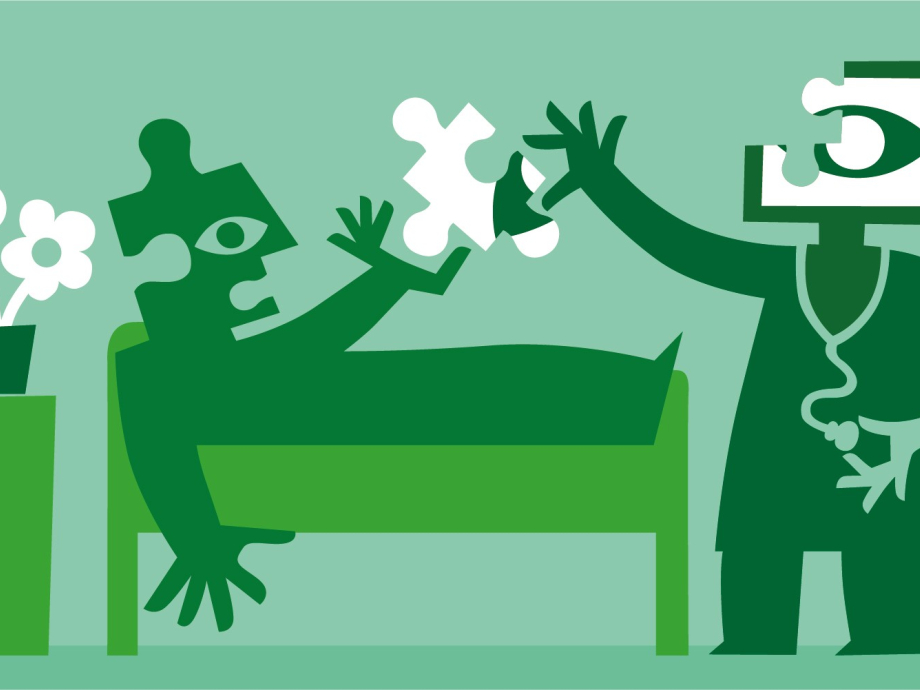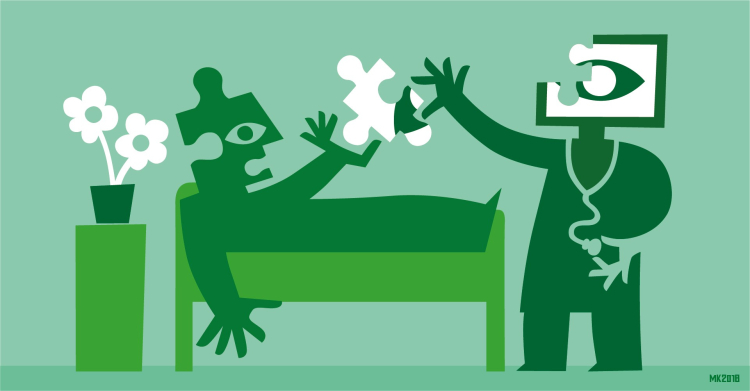E-health experts: Don’t take digital independence too lightly
There's a lot riding on e-health, but let’s not imagine that everyone gets the hang of it automatically, or that it suddenly makes patients more independent. Unless we provide personalised support, the health disparities between different groups will grow even wider

By Bettine Pluut, former senior adviser and action researcher at Nictiz, and Marinka de Jong, manager of the Patient participation and eHealth programme at Nictiz, the e-health expertise centre.
Reading time: 4 minutes | Be sure to read the other articles in the Decent Digitisation series.
The ideal world does not exist, not even with e-health. But new digital applications are creating new opportunities to give patients more control and independence. Take the ‘personal digital healthcare environment’, for example. This is an online environment that allows patients to review all their medical information and share that information with care providers, family members and selected friends. It helps patients stay informed and makes it easier to take decisions about their health and health care together with people in their network.
But not every patient can access and manage his or her medical information in an online environment. Not every patient can organise a collaborative decision-making process. And not every patient is capable of asking their care provider questions online during an ‘e-consultation’.
In fact, there are many, many patients for whom e-health applications are out of reach. Access to some applications is restricted, while others are too complicated for many patients to use. Another common problem is that applications may be available without patients knowing about them.

Equal access to good health care must take priority in e-health policies and projects
Toegang tot goede zorg moet voorop staan
Pharos, the Dutch Centre of Expertise on Health Disparities, observes that no less than 2.5 million people in the Netherlands are low-literate and another 1 million have trouble using digital tools. Contrary to what many believe, two thirds of these 3.5 million people are Dutch in origin. In the most recent edition of its biennial report Staat van Nederland (The Social State of the Netherlands), the Netherlands Institute for Social Research (SCP) observes that low-educated individuals, including those with low literacy, are lagging ever further behind. There are now large groups of people in Dutch society who find it difficult if not impossible to take control over their own lives, according to the Institute.
That means that as health care becomes increasingly digitised, we must pay closer attention than we do now to low-educated patients and those who have only a limited knowledge of health matters or IT skills. We must ensure that digitisation does not serve to widen instead of narrow the gap between vulnerable and resilient groups. In our view, the ideal of equal access to good health care must take priority in e-health policies and projects.
Linking ideals: empowering all
The good news is that we can link the ideals of patient independence and equal access to good health care by taking certain specific steps. We explain what they are below.
1. Work with patients to devise, develop and test applications
Designers of e-health applications should start by making their tools easy for everyone to use, even low-literate patients. That means that we should devise, develop and test e-health applications in cooperation with a large variety of different patients. Working with patients will ensure that e-health applications are user friendly and comprehensible to all.
For example, when we tested a random portal among low-literate patients, it soon became clear that the portal had too many long sentences and blocks of text. That caused the users to skip the texts – in fact, many did not even try to read them. ‘A lot of mistakes– unintentional ones– can occur in how people read information on a website. We really need patient input to develop truly user-friendly e-health applications,’ according to our director Lies van Gennip in a blog about the conference at which low-literate persons tested the portals on the spot.
2. Provide clear information about e-health applications
Second, it’s important for patients to be properly informed about the e-health application. Many of the instructions now provided are too complicated for low-educated patients. As a result, they use e-health for the wrong reasons or they ask too much of their doctors.
Recently, a GP told us that she is unable to answer many of the questions she now receives through the e-consultation channel. For example, a patient may enquire about a painful knee, a complaint that requires a physical examination. She indicated that it was particularly difficult for low-educated patients to determine when an e-consultation is appropriate.
On the other hand, e-consultations can also have important advantages for low-educated patients. They can take all the time they need to read through their care provider’s answer and advice. That message can also give them a link to confidential sources of information, or they can go over it with an informal care provider or family member. It might be useful to offer patients a simple leaflet or video that explains which complaints can be dealt with in an e-consultation. Tools such as the care provider's digital skills quick scan can help to assess patient skills.
3. Advise people about the best application for them
Finally, we need to make appropriate use of e-health applications. Not every application meets every need or is suitable in every situation. Online access to test results is one example. Some patients are capable of reading and interpreting the results themselves and want to do so; others would be better off having their doctor tell them their results personally.
A video call is ideal for patients who find a trip to the hospital too painful or exhausting, whereas a hospital visit gives lonely elderly people a welcome opportunity to make contact with others. Care providers can advise patients about whether or not to use a certain e-health application and explain the specific advantages for certain patients.
Making e-health applications for all
We have explained what we must do to link the ideals of patient independence and equal access to good health care. We hope that everyone involved in using IT to improve health care will not take the issue of patient empowerment too lightly. We must ensure that e-health applications are suitable for all.
If we can create digital applications that help precisely those people with low health skills, we will reduce health disparities. If we can manage to link the ideals of patient independence and equal access to good health care, then e-health will improve the quality of life of all patients.
By Bettine Pluut, former senior adviser and action researcher at Nictiz, and Marinka de Jong, manager of the Patient participation and eHealth programme at Nictiz, the e-health expertise centre.
Read more
Be sure to read the other articles in the Decent Digitisation series, and the related reports:
- Human Rights in the Robot Age. Challenges arising from the use of robotics, artificial intelligence, and virtual and augmented reality
- A fair share. Safeguarding public interests in the sharing and gig economy
- A never-ending race. On cyberthreats and strengthening resilience
- Urgent upgrade. Protect public values in our digitized society